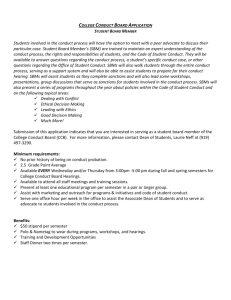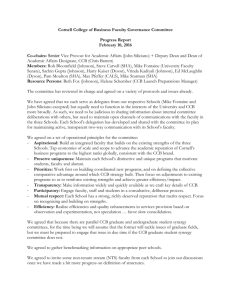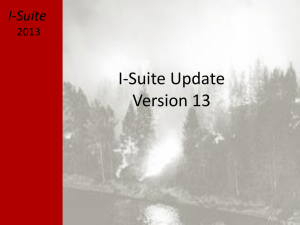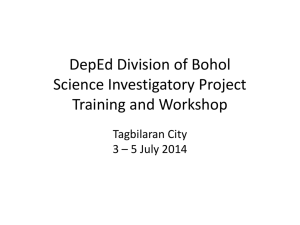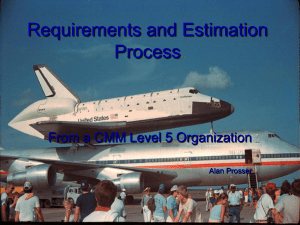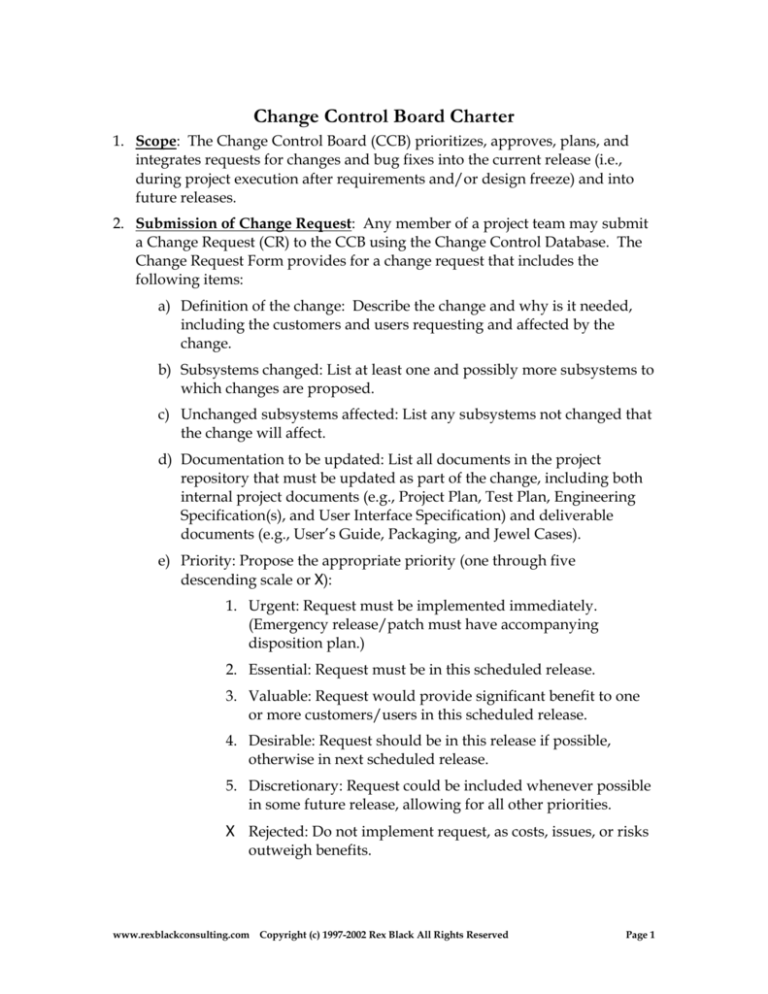
Change Control Board Charter
1. Scope: The Change Control Board (CCB) prioritizes, approves, plans, and
integrates requests for changes and bug fixes into the current release (i.e.,
during project execution after requirements and/or design freeze) and into
future releases.
2. Submission of Change Request: Any member of a project team may submit
a Change Request (CR) to the CCB using the Change Control Database. The
Change Request Form provides for a change request that includes the
following items:
a) Definition of the change: Describe the change and why is it needed,
including the customers and users requesting and affected by the
change.
b) Subsystems changed: List at least one and possibly more subsystems to
which changes are proposed.
c) Unchanged subsystems affected: List any subsystems not changed that
the change will affect.
d) Documentation to be updated: List all documents in the project
repository that must be updated as part of the change, including both
internal project documents (e.g., Project Plan, Test Plan, Engineering
Specification(s), and User Interface Specification) and deliverable
documents (e.g., User’s Guide, Packaging, and Jewel Cases).
e) Priority: Propose the appropriate priority (one through five
descending scale or X):
1. Urgent: Request must be implemented immediately.
(Emergency release/patch must have accompanying
disposition plan.)
2. Essential: Request must be in this scheduled release.
3. Valuable: Request would provide significant benefit to one
or more customers/users in this scheduled release.
4. Desirable: Request should be in this release if possible,
otherwise in next scheduled release.
5. Discretionary: Request could be included whenever possible
in some future release, allowing for all other priorities.
X Rejected: Do not implement request, as costs, issues, or risks
outweigh benefits.
www.rexblackconsulting.com
Copyright (c) 1997-2002 Rex Black All Rights Reserved
Page 1
Change Control Board Charter
f) Dependencies: List any linkages between this change and other
pending changes, on pending decisions, or on any assumptions.
g) Cost/savings: Estimated cost or savings inherent in the change as well
as post-release benefits.
h) Effort: Estimated number of person-hours of effort required to
implement the change.
i) Requested completion: Date to complete all implementation, testing,
and integration tasks.
3. Bug Reports: Bug fixes are handled through the CCB process, but no change
request form is required. If the CCB deems a bug report out of scope for the
current release, the submitter of the bug report may convert the bug report
into a change request (which cancels the bug report and opens a new change
request form). Individual programmers, with consent of their managers, may
dispose of low-risk, low-effort, medium-to-high-priority bug reports filed by
other team members without CCB review.
4. CCB Review:
4.1 CCB Membership: CCB for each project shall consist of a representative,
either the team manager or a responsible subordinate designated by the team
manager, of the following groups:
a) Development (one representing/responsible for each changed and
affected subsystem)
b) Test
c) Technical Support
d) System Operations
e) Finance
f) Marketing
g) Sales
h) Release Engineering
i) Project Management
4.2 CCB Process: The Change Control Board shall solicit impact statements from
the project team for all proposed changes and bug fixes. At each regularly
scheduled CCB meeting, the CCB shall review all outstanding change
requests and bug reports filed since the last CCB meeting. Priority one (i.e.,
urgent) change requests or bug reports will trigger a meeting within one
business day, or be disposed via e-mail and/or conference call. At the CCB
meeting, the CCB shall prioritize (using the scale above) each change or bug
fix for implementation, testing, and change integration, or reject the change or
www.rexblackconsulting.com
Copyright (c) 1997-2002 Rex Black All Rights Reserved
Page 2
Change Control Board Charter
bug fix. Following completion of any non-rejected change or fix, the
appropriate CCB members shall approve the final disposition.
4.3 CCB Process Checklist:
Step #
Step
Done?
1.
Gather requested changes and bug fixes proposed for
inclusion in the current, a future, or an emergency
system release.
2.
Review proposed requests during a regular or
emergency change control board meeting, via e-mail,
or by conference call.
2.A Assess associated feature, budget, schedule, and
quality benefits, costs, issues, and risks for
implementation, testing, and release. Defer
consideration to a subsequent meeting and obtain
clarifying information if necessary.
2.B
Prioritize or reject request.
2.C Identify implementation, testing, and release
integration deliverables, and estimated completion
dates.
3.
Plan, implement, test, and integrate the change or fix,
noting new costs, benefits, issues, or risks.
4.
Present implementation, testing, and release
integration results and deliverables for final approval.
4.A Assess outstanding feature, cost, schedule, and quality
costs, benefits, issues, and risks.
4.B
Weigh benefits of including change against costs,
issues, and risks.
4.C Approve or reject inclusion of the change in
appropriate release.
5.
If approved, check new or changed system
components, project documents, and other deliverables
into configuration management.
4.4 Final Approval: Each member of the Change Control Board (as outlined in
section 4.1) shall indicate final approval or rejection for each requested
change or bug fix following implementation, testing, and release integration.
www.rexblackconsulting.com
Copyright (c) 1997-2002 Rex Black All Rights Reserved
Page 3
Change Control Board Charter
Project and Executive Management may override the CCB decision on
approval or rejection.
4.5 Final Approval Criteria: The following outlines the final approval criteria for
all changes and bug fixes under this process. Final approval allows
integration of the change or fix into the system and delivery to customers or
users as part of a regular, maintenance, or patch release (i.e., any non-Beta
release).
a) Development: Each appropriate development manager (or designate)
approves to indicate: 1) The change has no impact to subsystems
within his/her purview; or, 2) The development team has fully
unit/component tested all anticipated impacts of the change(s) to the
subsystem(s) and the development manager has reported any major
technical or business impact issues or risks to the CCB.
b) Test: The test manager (or designate) approves to indicate: 1) The test
team has subjected the change an agreed-upon set of tests; and, 2) The
test manager has presented the test results to the CCB, including a
discussion of the business and technical risks assessed and mitigated
and those business and technical risks not assessed or mitigated.
c) Technical Support: The technical support manager (or designate)
approves to indicate: 1) The change has not introduced any major
technical or business impact issues or risks; or, 2) Any issues
introduced have a corresponding customer response documented and
posted on the support database and any risks introduced have been
appropriately mitigated.
d) System Operations: The system operations manager (or designate)
approves to indicate that the system infrastructure and the system
operations team are ready to support the change.
e) Finance: The finance manager (or designate) approves to indicate that
the financial impacts or risks are understood and they are acceptable.
f) Marketing: The marketing manager (or designate) approves to indicate
that the marketing benefits of the change outweigh any business or
technical issues or risks.
g) Sales: The sales manager (or designate) approves to indicate: 1) One or
more users or customers requires the change; and, 2) The benefits to
users or customers outweigh the business or technical issues or risks.
h) Release Engineering: The release engineering manager (or designate)
approves to indicate: 1) The release engineering team has received and
checked into the project repository all new and changed components,
documents, and other associated deliverables, and identified those
www.rexblackconsulting.com
Copyright (c) 1997-2002 Rex Black All Rights Reserved
Page 4
Change Control Board Charter
deliverables in the repository with the appropriate change
request/bug report identifier; and, 2) The release engineering team is
prepared to integrate the change into the scheduled or emergency
release/patch , build, and package a release containing the change as
part of the scheduled release or emergency release/patch, as
appropriate.
i) Project Management: The project manager approves to indicate: 1) All
tasks associated with the change are completed; 2) All deliverables
required for the change are implemented, tested, and integrated into
the release; 3) The project manager has received appropriate approval
from the CCB for the change; and, 4) The project manager shall notify
the project team and executive management of the integration of the
change in the appropriate release.
4.6 Attachment Requirements: The submitter of the change request shall include
all appropriate supporting information as an attachment to the Change
Request Form in the Change Control Database. The CCB may request
additional information, returning the Change Request to the submitter for
future research and resubmission for a subsequent meeting.
4.7 Final Deliverables: Prior to final approval, the Project Manager shall confirm
that all deliverables required for implementation, testing, and integration of
the release are completed, and the Release Engineer shall confirm that all
deliverables are checked into the project repository.
www.rexblackconsulting.com
Copyright (c) 1997-2002 Rex Black All Rights Reserved
Page 5

